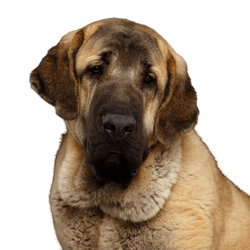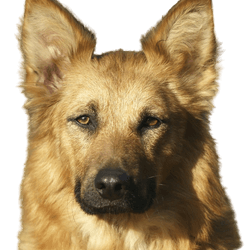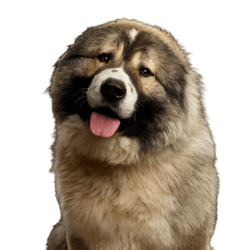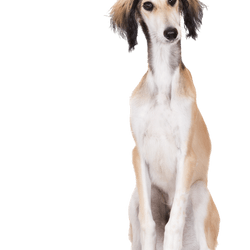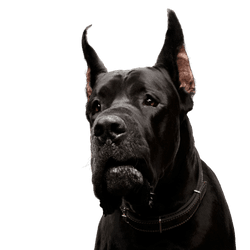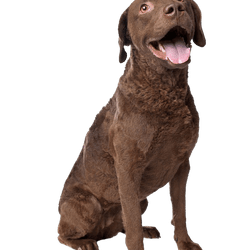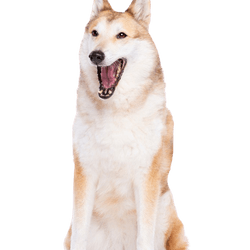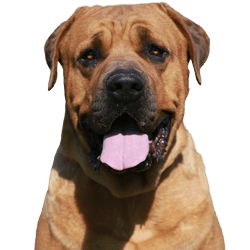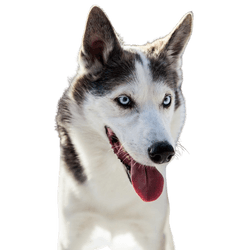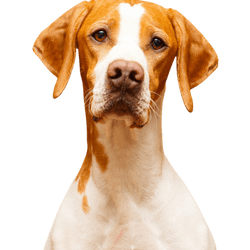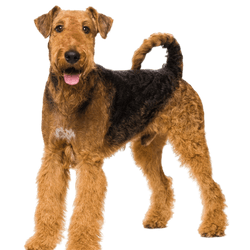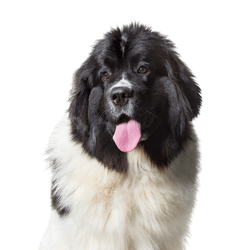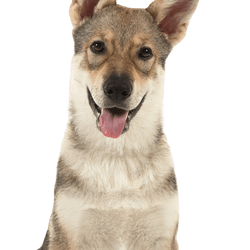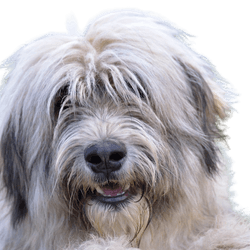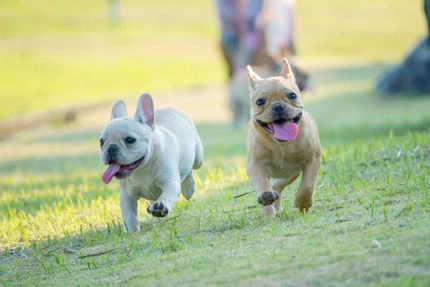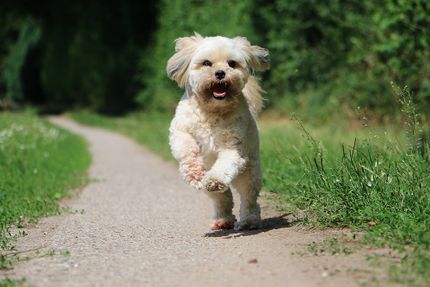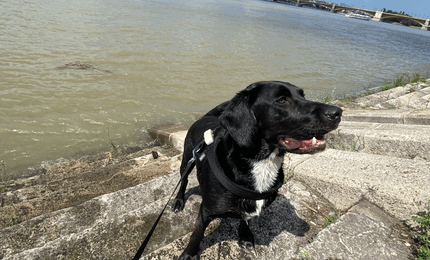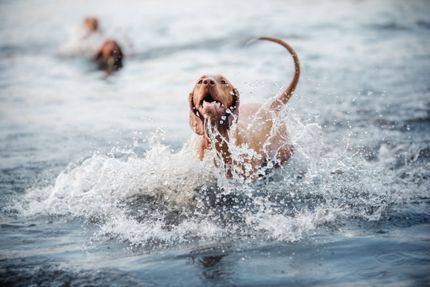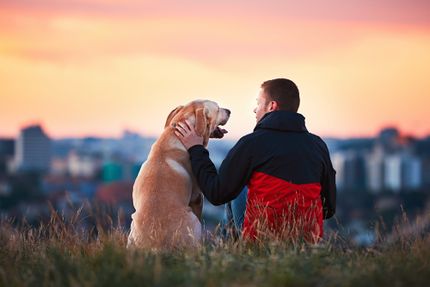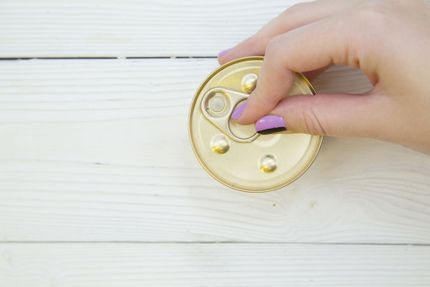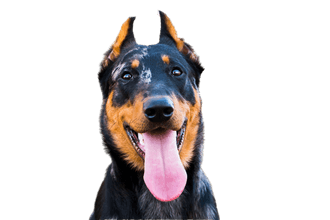
Beauceron Breed description: Character & Co
Beauceron
Facts & Origin
What is the origin of the Beauceron?
The Beauceron owes its name to its home in the sparsely populated Beauce region of northern France. Here, the animals traveled up to 100 kilometres with wandering shepherds to drive their herds to the best meadows. Since the shepherds had all of their belongings with them, Beaucerons also made sure that nothing was stolen along the way. They are closely related to the other well-known French shepherd dog Berger de Brie (also called Briard). Reportings of their ancestors can be traced back to the Middle Ages, but little is to be found about the Beauceron in the history books.
The first entries are from the end of the 19th century. The dog connoisseur Comte de Bylandt wrote that the breed was a "peasant dog, rather raw but intelligent, of medium size, strong and muscular build".
The founder of the German Shepherd Dog Breeding Rittmeister von Stephanitz discovered the Beauceron during his search for shepherd dogs in Central Europe and assumed that Great Danes were among the ancestors of the breed. However, this could not be proved until today. The veterinarian and cynologist Pierre Mégnin separated the Beauceron from other French shepherd dog breeds in 1888. The international recognition by the FCI was made in 1963.
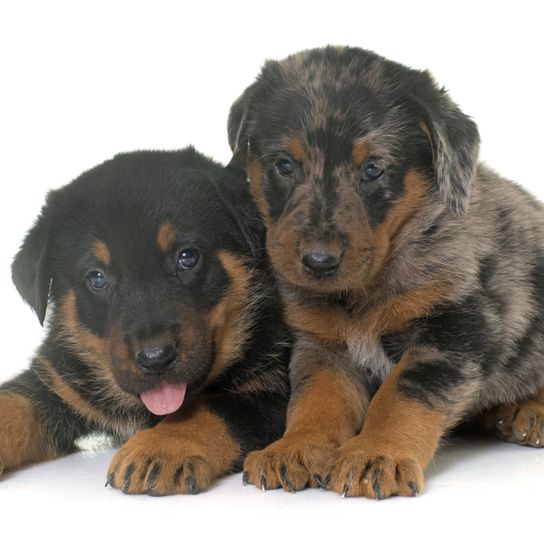
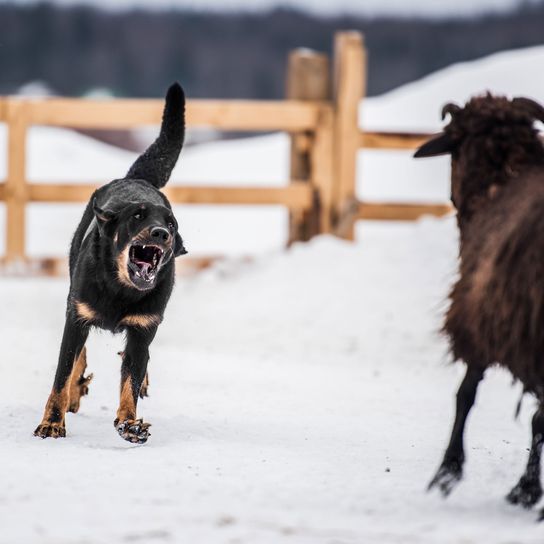
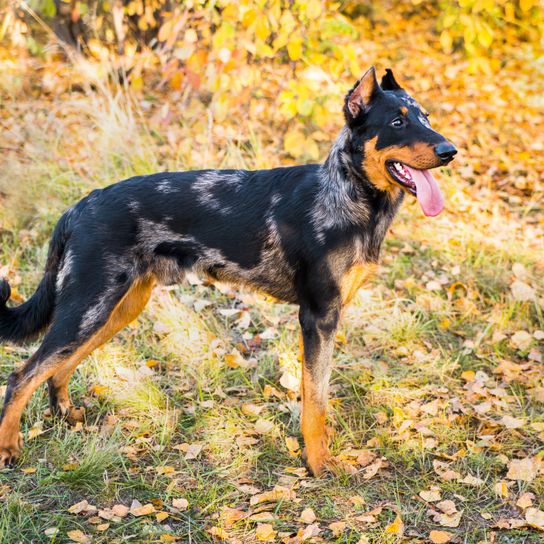
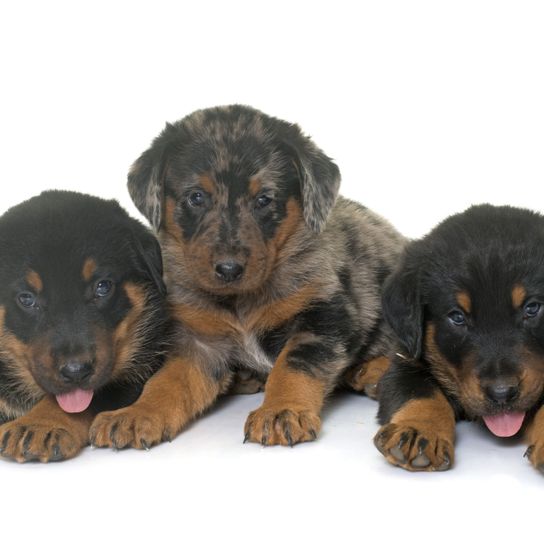
| Alternate Name | Berger de Beauce |
| Origin | France |
| Life expectancy | 10 - 12 years |
| Care requirements | low-maintenance |
| Activity level | high |
| FCI group | Sheepdogs |
| AKC group | not recognised |
| KC group | not recognised |
Attitude, character and temperament of the breed
What are the typical character traits of the Beauceron?
One thing is clear: If you don't make it clear to a Beauceron puppy who the one in charge is, you'll find yourself on the shorter end of the leash later on. In order for it to never comes as far as to a test of strength, practice how to behave on the leash with the young animal in a playful way. The basis for a harmonious life together with the Berger de Beauce is a respectful relationship, any injust treatment your four-legged friend will be upset about. The breed is relatively dominant, so their position in the pack must always be clearly defined. In the past, the Beauceron was used to travel many kilometers every day and being constantly busy. As the breed still requires exercise daily, it is not suitable for couch potatoes. The animal enjoys many dog sports such as obedience training, agility or mantrailing. In addition, you have a persistent companion if you take them cycling or jogging. It is important, however, that you don't just do animal's urge to move justice, but that you also challenge its clever head. Because of their intelligence, Beaucerons are used as service dogs for avalanche rescues, tracking or disaster relief operations.
Character
Usage
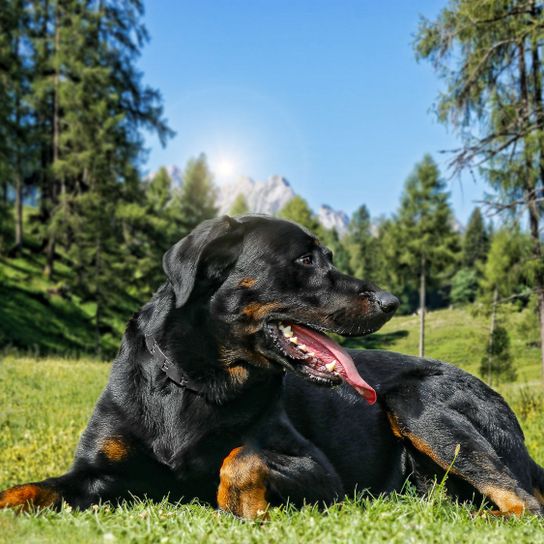

Health and breeding information
What are typical diseases of Beaucerons?
- Hip dysplasia: A serious breeder will provide you with proof that the parent animals are HD-free.
- Elbow dysplasia
- Epilepsy
An important factor in keeping your pet healthy well into old age is their nutrition. Two balanced meals per day are recommended. After eating, do not plan any strenuous activities to avoid the dangerous twisting of the stomach.
What should be considered in regards to Beauceron breeding?
If you buy a dog from from a Beauceron breeder who is registered with the Austrian Club for Beauceron you will end up with a healthy and strong puppy. The association is committed to the propagation of this multi-talented breed and attaches great importance to the observance of breeding standards. This includes character checks and the submission of DNA tests to prove the breed's purity.


What are the breed characteristics of Beaucerons?
The Beauceron is a breed with an impressive appearance, whereby it does not appear clumsy, but rather sporty. The alert look they give you and their slightly oval ears are also characteristic. The breed standard defines one specific feature that is somewhat obscure: breeding animals have to have a double dewclaw. This is the stunted big toe, which grows above the paws and has no contact with the ground. The dog resembles the Doberman optically a lot.
Appearance and coat of the Beauceron
About three to four centimetres long, dense fur covers the body of the Beauceron. Under the dense top coat the quadruped has a fluffy undercoat, which is ideally mouse-grey. The Beauceron is available in three colour varieties:
- Blue with tan markings
- Grey spotted with tan and black
- Black with tan markings
In all three types the paws are coloured reddish, which has earned the animal the nickname "Bas Rouge", meaning red stocking. During the year the coat care is not very complex: It is sufficient to wipe or brush the animal with a soft cloth from time to time. Twice a year the coat is changed, then daily grooming pays off to remove loose hair.
What size does a Beauceron get?
Full-grown Beauceron males can reach a height of up to 70 centimetres.
How much does a Beauceron weigh?
Male dogs can weigh up to 50 kilograms.
What is the life expectancy of a Beauceron?
A Beauceron can reach an age of 10 to 12 years.
| Fur length | short |
| Fur | flat coated |
| Ear shape | Tilt-ear |
| Tail | lang |
| Anatomy | muscular, strong, sporty |
| Size ♀ | 51 - 70 cm |
| Weight ♀ | 30 - 39 kg |
| Size ♂ | 51 - 70 cm |
| Weight ♂ | 32 - 50 kg |
| Suitable For | - |
Colors
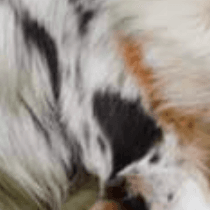
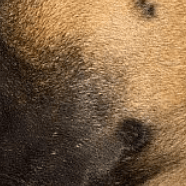
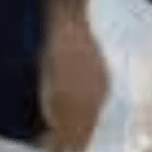

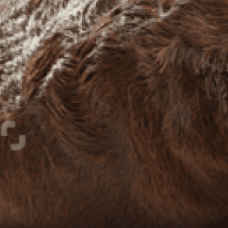



Other large dogs
Useful Articles
You can find articles that might interest you in the dogbible blog to match your favorite breed.
Visit our magazineto stay up to date on dog trends.
To find out more, view our Privacy Policy
Find here the breed that suits you and find out what character traits it has. Here you can also learn more about the origin, size and weight of your favorite breeds.
Matching your favorite breed, you'll find articles that might interest you on the dogbible dog blog.
5 reasons why it can be that your dog trembles
Biting power in dogs: These 7 breeds have the most power
Dog eats pig bones - is it dangerous? Everything you need to know about bones and dogs
Leaving the dog alone in the garden - advantages/disadvantages
